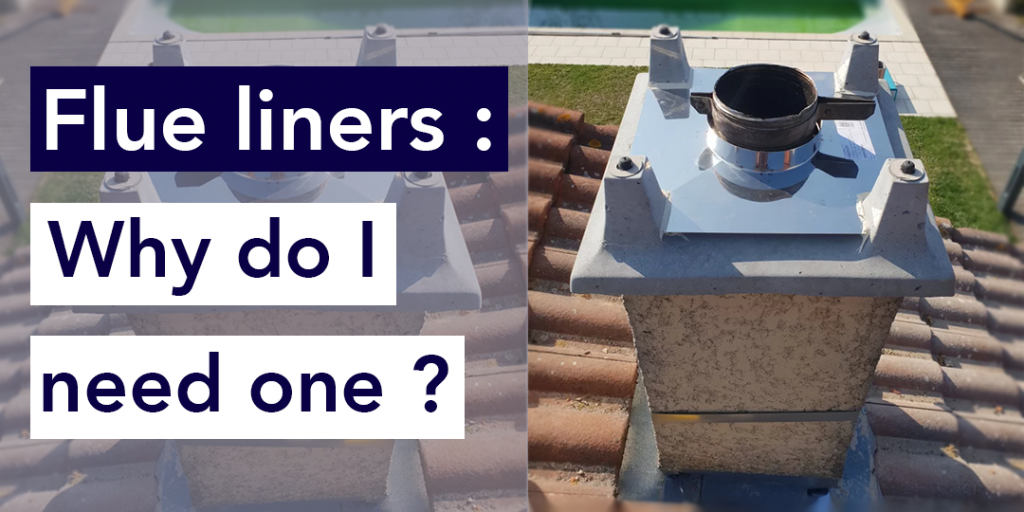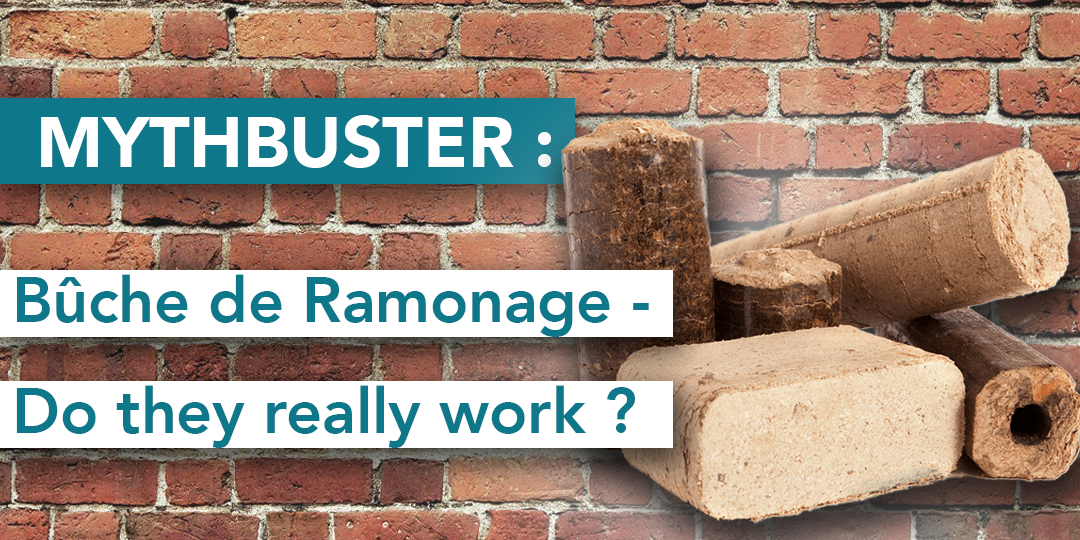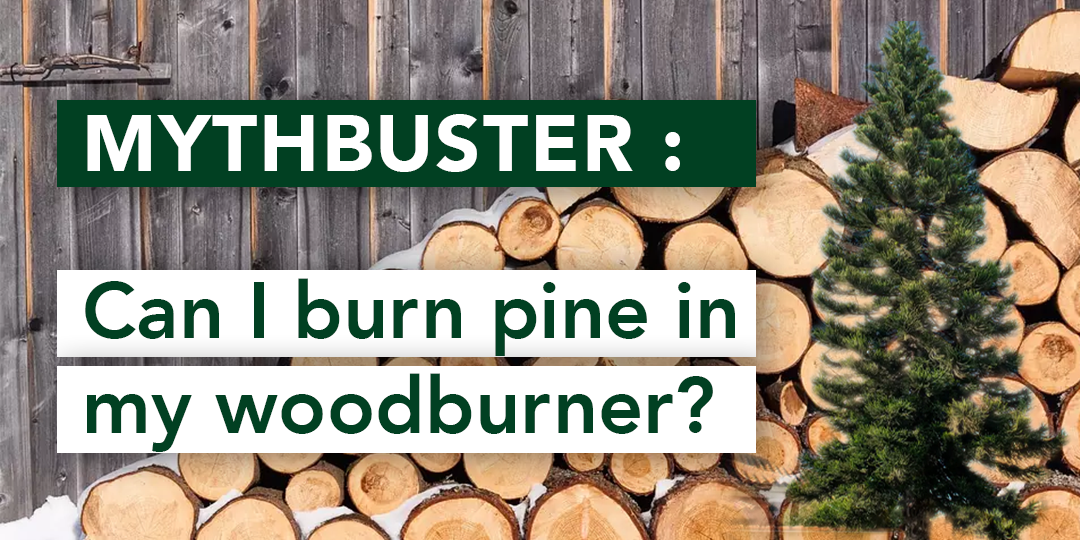A common question asked about chimneys is why we install liners inside masonry chimneys that have been serving fireplaces for hundreds of years. It is very common here in rural France to find DIY installers installing a stove with only a meter or two of liner, or in some cases, lining the entire chimney but stopping a meter or so shy of the top. In almost all instances, and often to the amazement of the installer, the existing masonry chimney “tars up,” and people are left scratching their heads as to why.
Smoke is Smoke
The smoke and other exhaust gases (collectively known as volatile hydrocarbons) entering the chimney are the same whether they come from a stove or an open fireplace, and whether they are in a stainless-steel liner or a masonry chimney. These volatile gases condense below 125°C as creosote and tar, which are, of course, flammable.
The Chimney Itself
A stone chimney is much larger in diameter than a stainless-steel liner. This alone allows the smoke in the liner to move faster through the pipe (thanks to Bernoulli’s principle and the venturi effect). In addition to this, steel heats up much faster than stone, which aids the exhaust gases in maintaining their temperature above 125°C and thus remaining as a gas and not condensing on the walls of the chimney.
Another added benefit of a liner is that there is simply less mass to heat up compared to that of a stone chimney, which greatly impacts the flue gas temperature, particularly when first lighting the fire.
Efficiency
An open fire can achieve an absolute maximum efficiency of 15%. In reality, the average efficiency you can expect from an open fire is around the 8% mark. This means, therefore, that around 90% of the potential heat energy is wasted up the chimney with the possibility of cooling and condensing.
Woodburners, on the other hand, are a minimum of 60% efficient and can achieve over 85% efficiency with top-of-the-range models. This is a huge difference when you consider that it is mainly the wasted exhaust gases that are responsible for heating the chimney and maintaining a high flue gas temperature.
It is, therefore, no surprise that when asking a woodburner to heat a large stone chimney, there is simply not enough mass and heat in the wasted gases to establish and maintain a flue gas temperature high enough to prevent the said volatile gases from cooling and condensing on the walls of the chimney.
Air Displacement
Chimney systems work off negative pressure. That is to say, they “suck” air up into and out of the chimney. When you see flames coming off the wood in your fireplace, you are seeing the volatile gases reacting with oxygen and thus combusting. It is imperative that enough air (and therefore oxygen) is supplied to the fireplace for these gases to burn. The advantage of a woodburner and the reason they are so efficient is that the fire burns inside a purpose-built firebox which can get incredibly hot, perfect for supplying the energy needed for the wood gases/oxygen reaction to take place.
On every stove, you will find adjustable air vents that allow the user to control the amount of air entering the system. As the air enters the firebox, the current mixture of gases is displaced into and up the chimney, continually being displaced by the introduction of new air constantly supplied to the stove. The surface area of the air vent on a stove is far smaller than the opening for an open fire, which effectively becomes, however big the entrance to the chimney is.
Open Fires vs Large Stone Chimneys
Taking the information above, we can understand why, despite their low efficiency, open fires do not tend to tar up large stone chimneys. The low efficiency of an open fire causes most of the wasted exhaust gases to enter the chimney before having the chance to combust. This large amount of waste provides heat to the chimney, which helps the gases retain their gaseous state rather than cooling and condensing as creosote and/or tar. In addition to this, the collective nature of a large amount of gas gives the benefit of insulation, similar to penguins huddling together in the Arctic to keep warm, which again stops the condensing. When you combine this with the constant air displacement from the lack of ventilation control, these gases are pushed up and out the chimney before they have a chance to cool down. This is why you see smoke come out the top of chimneys connected to open fires but not stoves (when used correctly).
Stoves vs Large Stone Chimneys
Due to the minimal waste entering the chimney from even the most inefficient stoves, we can understand why stoves and large chimneys are not a good mix. The smaller mass from the lack of exhaust gas waste does not benefit from the advantage of insulation and also cannot provide sufficient heat to the large chimney to keep the flue gas temperature high enough to prevent condensation of the gases. When combined with the minimal air displacement from the small air vents on the front of the stove, any smoke situated in the chimney cannot rise fast enough to exit the chimney as smoke, and therefore the majority cools in the chimney and condenses on the wall as creosote and/or tar.
Stoves vs Liners
On the other hand, when connecting the stove to a liner, you get to retain all the benefits of the stove, with its consistent heat output and minimal fuel requirements, all while having a safe and efficient chimney system. The waste from the stove is sufficient to heat a much smaller stainless-steel liner, which keeps the flue gas temperature at a point where gases don’t condense. With the added benefit of having such a smaller diameter, the gases require less air displacement to rush up and out of the chimney, keeping the liner free from deposits of cooled exhaust gases.
Unlined Stoves
Now that we understand the benefits of stainless-steel liners for woodburning stoves, it is obvious why only partially lining the system leads to disastrous consequences. Should the liner system not be connected to the top of the chimney, you are effectively asking the stove’s waste gases to heat not only a stainless-steel liner but also an entire stone chimney. The result is a much cooler flue gas temperature, which we know leads to the gases condensing on the walls of the chimney. Combining this with the lesser air displacement, the gases do not stand much of a chance of making their way out the chimney before they condense, which naturally leads to the formation of creosote/tar.
When a partially lined system is in place, both the brick chimney and liner would need cleaning, which would lead to the entire system needing to be dismantled to gain unobstructed access. Not to mention, designing a system to deposit flammable debris in and around a steel liner that runs at around 300°C is, of course, a huge fire risk.
Variables
Because chimneys come in all shapes and sizes, and stoves have differing heat outputs and efficiency ratings, it is possible that resulting deposits and their levels may vary. Particularly when you add in the wild cards of how the user runs their stove and what fuels are being burned, it is possible that an unlined chimney may get away without “tarring up” without a liner for some time. Similarly, a brand-new liner could induce enough tar to completely block itself in just 60 hours!
Installation
In all cases, it is clear to see why every stove should be lined from the stove outlet to the chimney top. With proper use of the appliance, users can expect their “temporary” stainless-steel liner to last them decades. I personally have some liners on my chimney sweeping round that are more than 30 years old and look as good as the day they were installed!
We highly recommend that everyone has their stove installed by a qualified, registered, and insured professional, and for anyone local to us, we would be happy to point you in the right direction to a competent installer. However, if you decide to install your own stove, please check out our “installing your own stove in France” blog series. This is not a step-by-step list of instructions and should certainly not be used as such. The aim of the blog series is simply to address many of the simple and avoidable mistakes made by DIY installers that we encounter daily.





